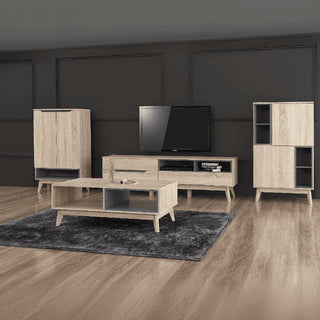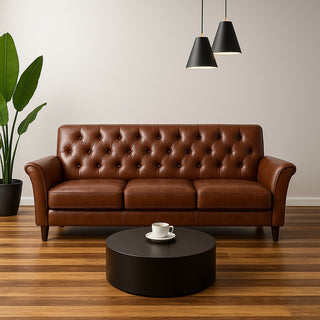If you’ve ever woken up with a sore back, stiff neck, or numb shoulder, your mattress might be trying to tell you something—and it probably starts with how you sleep. Your sleeping position plays a massive role in determining what type of mattress is best for your comfort, spinal alignment, and overall sleep quality.
In this guide, we’ll break down how different sleeping positions affect your body, and which mattress types are best suited for side sleepers, back sleepers, stomach sleepers, and those who toss and turn all night. Whether you're searching for the best mattress for side sleepers with shoulder pain or a firm mattress for stomach sleepers, you’re in the right place.
Why Sleeping Position Matters

Everyone has a default sleep position, even if we shift around a bit during the night. The way you sleep determines how your body weight is distributed, how your spine aligned, and where pressure builds up. The wrong mattress can cause misalignment, leading to poor sleep quality and even chronic pain over time.
When you choose a mattress based on your sleep position, you're investing in better sleep health, which can boost mood, energy levels, and even long-term physical wellness.
Best Mattresses for Side Sleepers

Side sleeping is the most common sleep position, and it’s often considered the healthiest—if you have the right mattress. This position helps reduce acid reflux and sleep apnea symptoms, but it also creates pressure points at the hips and shoulders.
What Side Sleepers Need:
-
Pressure Relief: Memory foam or hybrid mattresses with plush comfort layers cushion pressure points.
-
Spinal Alignment: Look for zoned support systems that keep the spine straight.
-
Medium to Medium-Soft Feel: Too firm and you'll feel sore; too soft and you’ll sink in without support.
Top Tip:
If you’re a side sleeper with lower back pain, consider a mattress with a memory foam top and pocketed coil base. This combo offers a balance of contouring and support.
Best Mattresses for Back Sleepers

Back sleepers generally have it easier—this position promotes natural spinal alignment and even weight distribution. However, if your mattress is too soft or too firm, it can throw everything out of whack.
What Back Sleepers Need:
-
Balanced Support: A medium-firm mattress keeps the hips from sinking too far.
-
Lumbar Support: Mattresses with zoned support or ergonomic layers can help reduce lower back strain.
-
Minimal Sinkage: Look for high-density foam or latex for optimal support.
Top Tip:
If you’re a back sleeper with sciatica or lumbar pain, a firm mattress with a little cushioning on top can do wonders for relieving pressure on the lower spine.
Best Mattresses for Stomach Sleepers

Stomach sleeping is generally not recommended—it can strain your neck and compress the spine. But if it’s your go-to, your mattress choice becomes even more important.
What Stomach Sleepers Need:
-
Firm Support: A firm or extra-firm mattress prevents the hips from sinking too much.
-
Flat Surface: Avoid thick pillow tops or plush layers that throw off spinal alignment.
-
Breathability: Latex or innerspring mattresses offer better airflow, which can prevent overheating.
Top Tip:
If you’re a stomach sleeper who overheats, go with a cooling gel memory foam or latex mattress. These materials help regulate temperature while providing the firm support your body needs.
Best Mattresses for Combination Sleepers

Combination sleepers shift between positions during the night. This calls for a mattress that’s adaptable, responsive, and suited for multiple sleep styles.
What Combo Sleepers Need:
-
Responsive Material: Latex or hybrid mattresses respond quickly to movement.
-
Medium Firmness: A balance between softness and support works best for all positions.
-
Motion Isolation: If you sleep with a partner, this is key to avoiding disruption.
Top Tip:
If you’re a combination sleeper looking for versatility, opt for a hybrid mattress with zoned support and a responsive coil base. It’ll adapt to your movements without sacrificing comfort.
Additional Considerations: Weight and Mattress Selection

Your body weight also affects how your sleeping position interacts with your mattress. Heavier individuals (over 230 lbs) often need firmer support to avoid sinking too deeply, while lighter sleepers (under 130 lbs) may prefer softer beds for proper contouring.
-
Heavier Side Sleepers: Try a medium-firm hybrid mattress with strong edge support.
-
Lighter Back Sleepers: A plush memory foam mattress can offer enough support without feeling too hard.
-
Heavy Stomach Sleepers: Look for a firm, dense foam or latex option to ensure proper hip support.
Final Thoughts: Choosing the Right Mattress for You

Sleep isn’t one-size-fits-all, and neither is your mattress. The best mattress for your sleep position should support your body’s natural curves, keep your spine aligned, and minimise pressure points. Whether you’re a committed side sleeper or a restless combo sleeper, choosing a mattress tailored to your habits can completely change how you sleep—and how you feel when you wake up.
Quick Mattress Buying Tips:
-
Test the firmness: Mattress firmness is subjective. Try different types in-store or shop with a sleep trial period.
-
Don’t ignore materials: Latex is more responsive, memory foam offers better contouring, and hybrids bring the best of both worlds.
-
Think long-term: A high-quality mattress lasts 8–10 years. Invest in something that supports your health and habits.
Frequently Asked Questions
What mattress firmness is best for side sleepers?
Typically, medium to medium-soft. It cushions pressure points while keeping your spine aligned.
Can your sleep position change over time?
Absolutely! Life events like pregnancy, injury, or aging can shift your sleep habits—so reassess your mattress when your position changes.
Is memory foam good for all sleep positions?
It depends on the firmness and density. It’s great for side and back sleepers, but stomach sleepers should choose firmer options.
Conclusion

Your sleeping position holds the key to unlocking truly restful sleep. Understanding how your body interacts with different mattress types is the first step to investing in better nights—and better mornings. Whether you’re seeking the best mattress for back pain or a soft mattress for side sleepers, match your choice to your sleep style and let your bed do the rest








